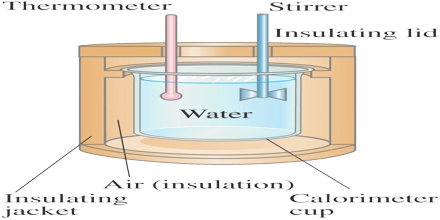Understanding the conservation of angular momentum and total energy is crucial in the realm of physics. These principles have profound implications not only in theoretical mechanics but also in practical applications ranging from planetary motion to engineering systems. The question arises: is angular momentum and total energy always conserved? This inquiry invites a deeper exploration of the conditions under which these conservation laws hold true and the myriad factors that can influence their applicability.
Angular momentum, a vector quantity, is defined as the product of a body’s moment of inertia and its angular velocity. More intuitively, it can be perceived as the rotational analog of linear momentum. The principle of conservation of angular momentum posits that in the absence of external torques, the total angular momentum of a system remains constant. This phenomenon is abundantly observable in various contexts, such as when a figure skater pulls their arms inward during a spin. As they tuck in their arms, they reduce their moment of inertia, resulting in an increased angular velocity, thereby conserving angular momentum.
However, the conservation of angular momentum is contingent upon the system being isolated from external influences. An external torque can disrupt this balance, resulting in changes to the angular momentum of the system. For instance, when a rotating object experiences friction or any other external force, the angular momentum may not be conserved. Such examples underscore the significance of external forces in determining the conservation behaviors of physical systems.
On the other hand, energy— in its various forms— plays a foundational role across multiple domains of physics. The law of conservation of energy states that the total energy within an isolated system remains constant. Energy can be transformed from one form to another, yet the total amount remains unchanged. This principle is applicable in classical mechanics, thermodynamics, and even quantum physics. However, understanding energy conservation requires a nuanced perspective, particularly when considering different forms of energy, such as kinetic, potential, thermal, and chemical energy.
In closed systems, both total energy and angular momentum are conserved. This principle can be readily observed in the behavior of celestial bodies, such as in the orbits of planets around the sun. In the vast emptiness of space, where external forces are minimal, the angular momentum and total energy of celestial systems remain remarkably stable. The gravitational interactions between celestial objects can lead to exchanges of energy, yet the overall conservation persists.
Nevertheless, real-world systems often deviate from ideal conditions. Factors such as friction, air resistance, and other dissipative forces complicate the idealized notions of conservation. In mechanical systems, energy can be lost as heat due to friction between moving parts. In such scenarios, while the initial conditions of a system might exhibit conservation of energy, the eventual outcomes reveal a transfer of energy into non-recoverable forms. Therefore, while the total energy is conserved in an abstract sense, in practical scenarios, energy can be rendered ineffective due to these dissipation mechanisms.
The fascinating relationship between angular momentum and total energy intertwines itself with systems exhibiting rotational dynamics. Take, for instance, spinning tops or gyroscopes. These devices exemplify the interplay of both angular momentum and energy. A spinning top maintains its orientation due to the conservation of angular momentum. However, its kinetic energy gradually dissipates due to friction with the surface beneath it, until it eventually succumbs to gravity and falls. This illustrates a pivotal point: while angular momentum can be conserved in a rotational system, its associated kinetic energy may not remain available for use.
Considering the quantum realm, the conservation laws take on unique forms. In quantum mechanics, systems can exist in superpositions, exhibiting behaviors that challenge classical intuition. Here, both energy and angular momentum are quantized, meaning they can only take on discrete values. The conservation of these quantities in quantum systems plays a vital role in interactions, such as particle collisions and decay processes. Quantum entanglement further adds layers of complexity, showcasing the intricate behaviors that challenge conventional understandings of conservation.
Furthermore, conservation principles extend beyond isolated systems to encompass broader contexts like thermodynamics and cosmology. In thermodynamic systems, energy conservation manifests through various processes such as heat exchange and work done, showcasing the interdependence of different energy forms. On a cosmic scale, the conservation of energy and angular momentum underpins the structure of galaxies and the dynamics of the universe itself, suggesting profound interconnections across different levels of reality.
Ultimately, while angular momentum and total energy conservation are robust principles that govern the mechanics of both everyday experiences and cosmic phenomena, they are also susceptible to the nuances of real-world interactions. External forces, dissipative effects, and contextual limitations reveal the complexity of the natural world. The interplay between these conservation laws captivates the imagination, inviting inquiry into a realm that interlinks theoretical elegance with observable phenomena. Our understanding of these principles not only sheds light on the workings of nature but also serves as a reminder of the delicate balance that sustains both cosmic harmony and terrestrial machinery.





